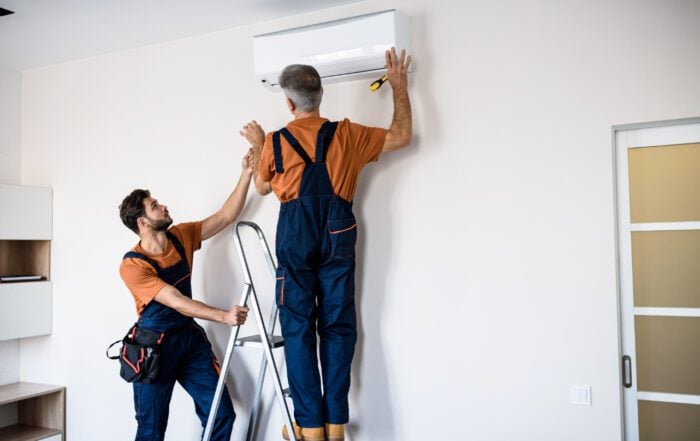Leaks shouldn’t be ignored as they can endanger you and your family’s health. This problem can also lead to structural damage when left unresolved, which can cause further deterioration in the long run.
With this in mind, you should stay vigilant and watch out for signs of leakage. Here are the steps you can take to find a water leak in your wall:
1. Look for Discoloration
If you notice any discoloration on your walls, it indicates that some pipe might be leaking and water is seeping through. At first, it might look like the walls are sweating, with beads of moisture. Later on, it will turn into a full-fledged wet spot. It’s relatively noticeable since one area will have a different color than the rest.
2. Check for Mold
Mold thrives in damp and moist environments, so finding it in your bathroom is not a surprise. However, if you notice its growth in other parts of your home that are supposed to be dry, you should be wary and have a professional inspect what’s going on behind the walls.
This fungus typically looks like a dense cluster of black, brown, or dark green dots. However, it can also appear purple, yellow, red, or white. Just be mindful of any unusual growth in your property.
You should be extra careful when you find mold presence in your home since its spores can travel through the air easily. When inhaled by humans, they can trigger allergic reactions and lead to breathing difficulties, itching, and even headaches. In connection, a room’s musty smell can also signal a water leak in one part of the wall.
3. Watch Out for Puddles
Wet spots in your home are an alarming sign that water leaks have become serious. It implies that the hole in the affected pipe or tube has become bigger, which is why water may be pooling in a particular area. If you consistently notice a wet carpet or wet floor in a certain room, you might have a leakage problem.
4. Be Mindful of Wall Texture Changes
Warping in the walls or floors can indicate water leaks. As the water escapes the pipes and seeps through the walls, it can damage your wallpapers or moldings. With this in mind, you should watch for changes in your wall or floor’s appearance, especially if the warping consists of a bubble-like texture.
Water-logged drywall may take on a sagging look. Meanwhile, walls with more severe leaks may also curve outward and eventually break down due to the water’s weight.
5. Listen To Dripping Sounds
Dripping sounds are also a great way to determine whether there are leaks in your walls. Of course, this will only work on drywall or wood paneling since concrete walls won’t allow you to hear noise from the other side.
Additionally, plastic PVC water pipes amplify the sound of dripping, so you can hear leaks easily if you have these. Conversely, iron pipes don’t echo dripping sounds that much, which means you should be extra vigilant in looking for signs of leakage.
6. Examine Your Water Bill
Your water bill can also give you an idea if you have leaks in your home. Consider how much your family uses daily, weekly, or monthly, and compare it with the amount that you need to pay. If you’re getting billed for substantially more than what you’re using, there may be a leak somewhere in your home.
Stack Plumbing
Water leaks should be addressed immediately since these can lead to structural damage and affect you and your family’s safety. If you find any leaks, call Stack Plumbing today! Visit our website or call (440) 937-9134 today!
Have Any Questions?
If this is an emergency please call 440-937-9134.
Otherwise, please feel free to call us or submit this form to schedule an appointment for service or request an estimate. We will contact you shortly!





